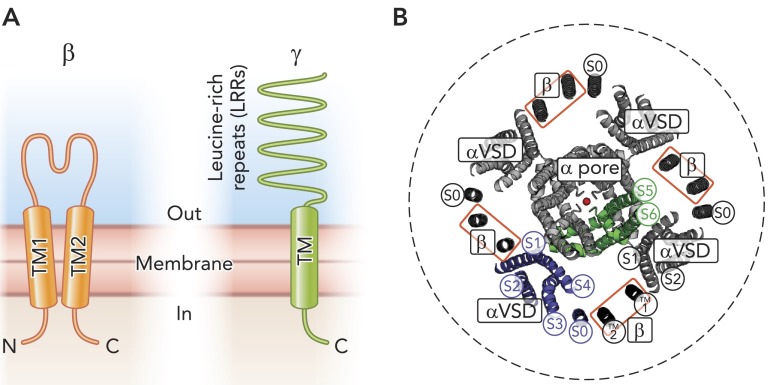FIGURE 4.
Auxiliary subunits of Slo1
A: schematic organizations of prototypical β and γ (LRRC) subunits. Not drawn to scale. B: probable relative positions of Slo1 and β subunits viewed from the extracellular side. The Slo1 transmembrane structure is based on a homology model. Each Slo1 (α) subunit consists of seven transmembrane helices, of which S0–S4 make up a voltage-sensing domain (VSD, green), whereas S5–S6 (green) contribute to the central, the K+-selective pore (a conducting K+ is shown in red). Auxiliary β subunits possess two transmembrane (TM) helices (black), of which TM2 associates with α subunit S0, whereas TM1 associates with S1 of a neighboring α subunit (80). S0, TM1, and TM2 were constructed as ideal α helices and positioned according to Liu et al. (80). The dashed circle represents the size of the cytoplasmic gating ring domain (∼15 nm in diameter).

